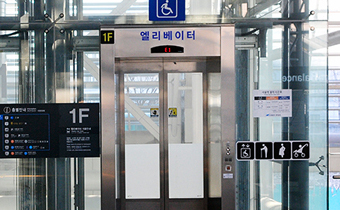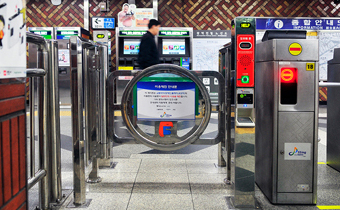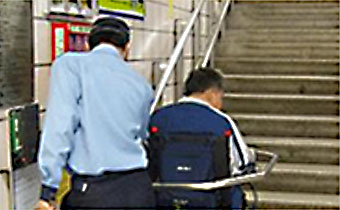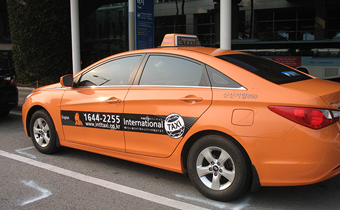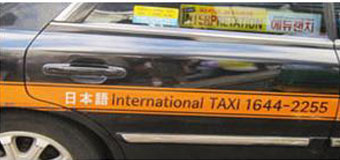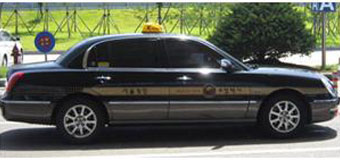Transportation
-
●Arrival at Incheon International Airport
Ranked the best airport in the world for 12 consecutive years, Incheon International Airport is fully-accessible for everyone. Upon request, service agents will provide assistance with entry documents, immigration procedures, and baggage claim, as well as escort to transportation. The airport is equipped with electric vehicles pickup service for persons with mobility difficulties. You can move to general area of the airport, check-in counter, duty-free area, and boarding gate with this service.
Using one of the help phones located throughout the passenger terminal at entry gates 3, 7, 8 & 12, will connect you directly with the Airport Help Desk if you are in need of any assistance. Wheelchairs can be rented for free at the information desks on the departure level at entry gates 3 & 12, or the arrival level at entry gates 5 & 10.
|
◾︎ Incheon International Airport Help Desk - Tel: +82-2-1577-2600 - Location: Terminal 1, 2 (Details) * For in-flight services, please contact your airline. |
-
●Getting to Seoul
-
1.Airport Railroad Express
The Airport Railroad Express (AREX) is a railway line that connects Incheon International Airport and Gimpo International Airport to Seoul Station in downtown Seoul. The express train will take passengers to and from Incheon International Airport and downtown Seoul in just over 40 minutes nonstop. Express trains is operated at 20 and 40 minutes of every hour. Regular trains stop at various stations and take 60 minutes, but depart every 5-10 minutes. All stations and trains are fully accessible, while every train has designated areas for wheelchairs. (Details)
-
2.Airport Buses
Airport buses conveniently drop off passengers at major hotels and locations throughout the city. However, most airport buses are not fully accessible vehicles. (Details)
|
◾︎ Airport Bus Companies |
|
-
3.Taxis
Taxis are the most expensive option but some travelers might find them more convenient to use. There are four types of taxis: Standard, international, deluxe, jumbo. The type of taxi can usually be distinguished by its color. International taxis are 20 percent more expensive than standard taxis and drivers speak English, Japanese, or Chinese. Deluxe taxis are approximately 40 to 50 percent more expensive than standard taxis, but use larger, more luxurious sedans. Jumbo taxi vans can accommodate up to eight passengers at once and are the same price as deluxe taxies. Taxi stands for each type of taxi are located outside the arrival terminal. (Details)
-
4.Seoul Danurim Airport Pickup Service
If you are a wheelchair user, you can utilize the wheelchair lift vehicle provided by the ‘Seoul Danurim Accessible Tourism Center' for transportation from Incheon Int’l Airport to your accommodation in Seoul. This service is not available continuously, so please check the detailed information on the guidance page within the Seoul Danurim Website. (Details)
-
1.Subway
* Accessible facilities may not be up-to-date in some smaller and older subway stations.
-
2.Taxis
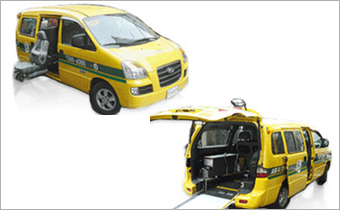 Wheelchair Accessible Call Taxis
Wheelchair Accessible Call Taxis
|
◾︎ Fare - KRW 1,500 for first 5km - KRW 280/km from 5-10km - KRW 70/km after 10km ※ Toll fees paid separately ◾︎ Website: https://www.sisul.or.kr/open_content/calltaxi/ ◾︎ Tel: +82-2-1588-4388 ◾︎ Hours: 24 hours |
|
◾︎ International Taxi Call Center - Website: https://www.intltaxi.co.kr/?lang=en - Tel: +82-2-1644-2255 |
-
3.Buses
|
Overall Breakdown The subway is the most economical and efficient mode of travel for longer distances, but it may not always be the best mode of travel for travelers with mobility disabilities. Be sure to always check the list of accessible features at your arrival, departure, and transfer stations. If you travel by wheelchair, it is advised to avoid stations where wheelchair lifts are the only option. Taxis are ideal for traveling shorter distances, or to locations without an accessible subway station close by. Regular taxis can be caught from most anywhere but may not be able to stow a wheelchair. If you plan on visiting several locations, renting a taxi, though more expensive, might be the most convenient option. Accessible call taxis are convenient but might not always be a viable option due to the long wait time. Due to limited operation of low-floor buses and the lack of English sign at bus stops, buses are not recommended. |
※ Hospital & Emergency Numbers
In the case of a medical emergency, dial 119 The caller's location will automatically be detected and an interpreter will be connected to the call. Ambulance dispatch is fast and free. For all other medical information, dial +82-2-1339. English-speaking doctors and medical officers are available to provide assistance.
